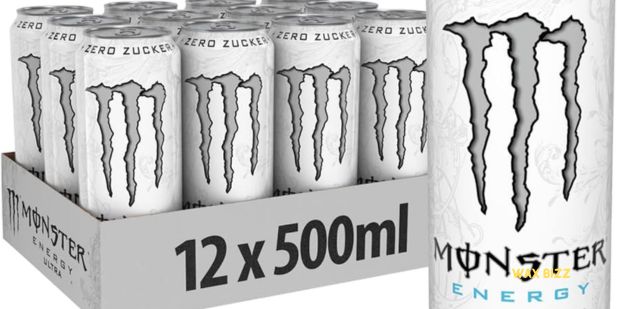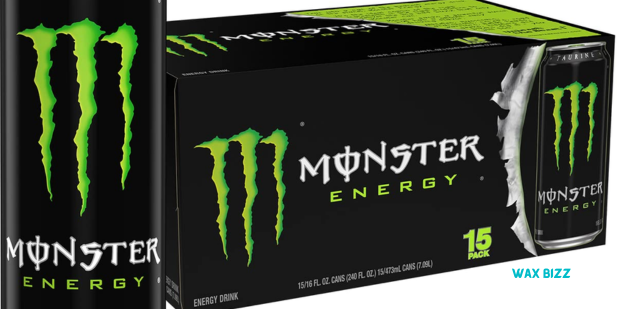Monster Energy Drink have become a staple in energy drinks, known for their bold flavors and extreme image. From its iconic green cans to its sponsorship of extreme sports and events, Monster has solidified itself as a top player in the beverage market. But what makes this brand unique? In this review, we will dive deep into the history, ingredients, flavors, and marketing of Monster Energy and look at their latest venture into the challenging alcohol market with the launch of their “The Beast Unleashed” line.
The Origins and Rise of Monster Energy Drink
Monster Energy’s journey began in April 2002, when it was introduced by Hansen Natural Corporation (now known as Monster Beverage Corporation) to the rapidly growing energy drink market. The company, which had been in the beverage business since the 1930s, decided to create a product that would resonate with a younger, more dynamic audience. They launched Monster Energy with a clear mission: to energize and encourage their consumers through a unique combination of taste, branding, and marketing strategies.
Unlike many of its competitors at the time, Monster Energy offered a larger can size, providing more beverages and, by extension, more energy, which quickly garnered attention and appreciation from its target market. The brand’s ascent was meteoric, fueled by savvy marketing and sponsorship deals with extreme sports events, motorsports, and music festivals. These partnerships were pivotal in shaping Monster’s edgy and rebellious image, aligning perfectly with the lifestyle and aspirations of its audience.
What’s Inside a Can of Monster? Ingredients and Nutrition
At the heart of every can of Monster Energy is a carefully crafted blend designed to boost energy and focus. The primary active ingredient is caffeine, with a typical 16-ounce can containing about 160 milligrams, roughly equivalent to a medium cup of coffee. This is complemented by taurine, an amino acid linked to improved physical performance and recovery. Monster Energy also contains B vitamins, such as niacin (B3), vitamin B6, and riboflavin (B2), which play vital roles in converting food into energy.
The energy blend is sweetened with a mix of sugar and glucose, providing a quick energy source. However, some versions, like the White Monster Energy Drink, opt for a sugar-free formula, using artificial sweeteners like sucralose and acesulfame potassium instead. Each can also contain a significant amount of carbohydrates, primarily from sugars, which can offer a rapid energy boost.
The Flavor Spectrum of Monster Energy

The flavor portfolio of Monster Energy is as bold and diverse as its branding, offering an extensive array of choices that cater to virtually every palate. Initially launched with its original flavor, the brand quickly expanded its lineup to include various options, from fruity to coffee-inspired blends. Among the standout choices is the “Zero Ultra” series, which features the White Monster Energy Drink – a lighter, zero-sugar version beloved for its crisp, citrusy taste. Conversely, the “Java Monster” line indulges coffee lovers with a caffeinated combination of rich coffee and Monster’s signature energy blend.
The “Mango Loco” and “Pipeline Punch” flavors offer a sweet, fruity escape for those seeking tropical vibes. The “Ultra Violet” and “Ultra Red” selections appeal to those desiring a sugar-free option without compromising taste, delivering vibrant berry and grape notes, respectively. This broad flavor spectrum demonstrates Monster’s innovative approach to product development. It ensures a Monster Energy Drink to refresh and energize every consumer, no matter their flavor preference.
Marketing the Monster: Strategy and Impact
Monster Energy’s marketing strategy is a masterclass in branding and audience engagement. The company has honed a distinctive approach by sponsoring extreme sports events, including motocross, BMX, skateboarding, and even eSports, aligning itself with the adrenaline-pumping lifestyles of its consumers.
This strategic alignment goes beyond mere sponsorship; Monster actively participates in these communities, fostering a sense of belonging and loyalty among fans. Its logo, a clawed “M” reminiscent of a monster’s scratch, has become an emblem of daring and adventure, often seen adorning hats, shirts, and stickers, turning consumers into brand ambassadors.
Social media campaigns and collaborations with influencers in the sports and entertainment sectors further amplify Monster’s reach, engaging younger demographics in their native digital landscapes. The impact of these marketing efforts is undeniable, transforming Monster Energy into a cultural icon that transcends its role as a beverage. Through these initiatives, Monster has captivated an extensive and dedicated fan base and set a benchmark in lifestyle marketing, demonstrating how a brand can weave itself into the fabric of its consumers’ identities.
Monster’s Cultural Footprint and Community Engagement
Monster Energy’s influence extends beyond the realm of energy drinks into a cultural phenomenon. The brand has fostered a unique community celebrating individuality and high-octane lifestyles by supporting extreme sports and music festivals. This engagement has led to a passionate fanbase, evidenced by the widespread display of Monster decals and apparel.
Final Words
In wrapping up our comprehensive review of Monster Energy Drink, it’s clear that this brand has mastered the art of flavor and energy and cultivated a distinct identity that resonates deeply with its audience. From its early days to the innovative “The Beast Unleashed” venture, Monster continues to push the boundaries, ensuring it remains a beloved staple in the energy drink market and an emblematic figure in cultural landscapes. Whether you’re a long-time fan or newly intrigued, Monster Energy’s journey is a testament to the power of dynamic branding and the relentless pursuit of excellence.
